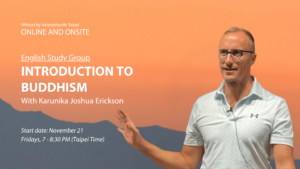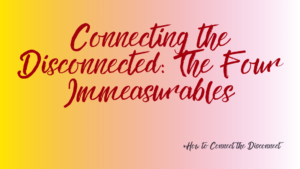It is said that if we can truly connect with impermanence, we will be able to practice well, and practice will come easily. Understanding impermanence is like the preparation or preliminary for practice, just like cleaning our house is the preparation for having a party.
Now when I say “impermanence,” that doesn’t just mean death, loss, and endings. It means especially subtle impermanence—momentariness—and using the present moment well. If we can take the opportunity of the present moment, then whatever practice or activity we are doing will naturally happen. Gradually, our practice will steadily grow, one step at a time.
All there is, really, is the present moment. The past and future are both things that our thoughts can play with, but it is important to not get stuck in ideas of the past or the future. We need to focus on simply doing one thing right now. One dish at a time, one in-breath, one action in one tiny moment is all there is to do. When you get the hang of it, this is way easier than doing all the things for a long time.
Whenever I remember this instruction, I find myself practicing more. And whenever I forget this instruction, practice becomes difficult, and I practice less. So, in my personal experience, this instruction is key if we want our practice to become easy.
Then what about the main practice? If momentariness is the preliminary, what is the main practice? Should we sit on the cushion? Now what?
The main practice, if we boil it down, is to engage in more altruistic thoughts and actions and let go of the habit of being self-centered. We should habituate ourselves in altruistic thinking and behavior. Whether it is meditation or our activities throughout the day, from a Buddhist perspective we should try our best to benefit not only ourselves but others.
It might takes some effort to connect with impermanence at the beginning, but it’s worth it. We practice with the goal of making all sentient beings happy.
Excercise (20 minutes)
- Sit, relaxed, without moving the body. Breathe.
- Connect with the objects of the present moment in your immediate environment. Look at the forms. Listen to the sounds. Feel the temperature of the space you are in. What do you smell? What do you taste?
- If you get distracted, gently bring your mind back to the objects in your immediate environment.
- Enjoy the pleasures of your senses. Be in the moment.
- Mentally offer the sense pleasures to all sentient beings.
- Conclude your session with an aspiration: May all sentient beings find enjoyment in the experiences of the senses.

Christian Scott has been a student of Dzogchen Ponlop Rinpoche since 2011. Having grown up among the Khenpo Tsültrim Gyamtso Rinpoche sangha, Christian finds himself humming Milarepa´s Songs of Realization regularly. Since 2012, he has been traveling around the world learning Tibetan as well as studying and meditating on the dharma.






